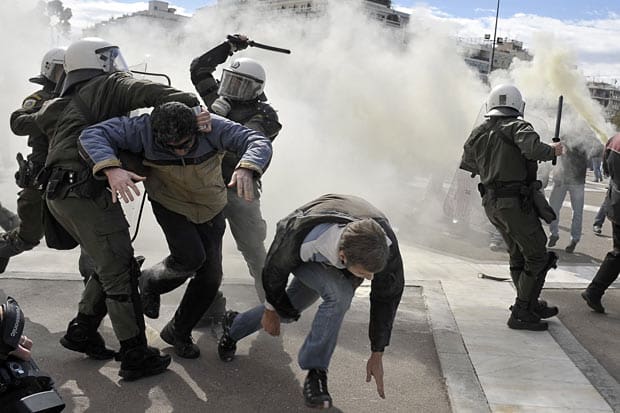AntiNote: The following is an extended excerpt of the Ex-Worker Podcast’s own transcript of their fourteenth episode, entitled “Squat the World!” That episode includes good discussions on the topic of squatting as well as interviews with squatters; the segment we are sharing here is their review of Hannah Dobbz’s book Nine Tenths of the Law.
Longtime followers of Antidote may recall that we posted a review of the same book some months ago. Ed Sutton’s take on it was characteristically chatty and gushing—and the Ex-Worker’s review also begins with high praise. But the two reviews’ paths diverge when it comes to Dobbz’s conclusions and her prescriptions for any housing justice movement centered on property resistance. Ed is a fan. Ex-Worker is not.
Despite a high-profile struggle currently underway in Zürich, it has been a while since the Antidote Writer’s Collective has weighed in on the topic of housing justice. We invite you to get the juices flowing again with a comparison of these two reviews, with the promise of updates on Labitzke to come.
The Chopping Block
Alanis: In keeping with our theme in this episode, today we examine a recent book from AK Press about squatting, titled Nine Tenths of the Law: Property and Resistance in the United States. Hannah Dobbz, a filmmaker, writer, and former punk squatter, has compiled a book full of history and facts about property and law in the United States.
The book kicks off with a brief discussion of indigenous struggles, particularly the American Indian Movement’s occupation of Alcatraz Island. It goes on to explore the history of land squatters in the 18th and 19th century, whose conflicts with both state authority attempting to regulate them and the indigenous inhabitants of their lands formed one of the core dynamics of early American history.
From there, it shifts to the 20th century saga of urban housing politics, from white flight and spatial deconcentration to urban homesteading and Lower East Side squatters. Subsequent chapters take on the housing market and the 2007 foreclosure crisis, the tenuous possibilities of adverse possession and other legal rights relevant to squatters, and an assessment of the costs and benefits of obtaining legal title to a squatted building. Dobbz concludes with discussions of cooperative alternatives such as land trusts and contemporary strategies of squatter and housing justice activists.
There’s a lot of facts and figures in here; the book mostly manages to avoid coming across as dense or technical, though depending on what your interest is, you may find yourself skimming some parts. To me, the history sections proved the most lively read, and even the drier sections are peppered with vivid anecdotes that bring the material to life.
The book usefully distinguishes the US context for its unique cultural, historical and legal circumstances, shedding light on why European squatting movements operate so differently. Dobbz insightfully assesses squatting as a phenomenon that simultaneously attracts and repels both left and right wing impulses in the American political imagination, which helps explain the harsh condemnation but persistent fascination it has attracted throughout US history.
Another plus to the book is its range of appendices, including a detailed guide to researching potential buildings, the ins and outs of relevant property laws including a state-by-state breakdown, a glossary of terms, and more.
However, the book’s politics leave much to be desired. Dobbz seems to miss the significance of squatter conflicts with the state as a potential catalyst of broader revolutionary upheaval. For example, after discussing the brutal eviction of the radical Danish squat Ungdomshuset in 2007, she refers to the Copenhagen city council’s subsequent offer of a new social center as “serendipitous,” saying, “All in all, it wasn’t a terrible trade.”
Likewise, she dismisses efforts by Occupy movement protesters to seize buildings in Seattle and Portland as “poorly planned,” “hot-headed,” and “frustrating to local organizers who lose footing when young squatters seem to relish in the conflict of squatting rather than making plans that work.”
She doesn’t appear to grasp that a squatted social center isn’t just a building for concerts and workshops, but a site that mobilizes resistance against state and capital, not just in the content of its programs but in its very existence; this basis in structural defiance of the law marks the difference between a pacified faux-radical target market and an actual culture of resistance.
The legalization of compliant left-wing social centers across Europe (in tandem with the violent destruction of non-compliant ones) threatens to dismantle the social movement that makes the infrastructure relevant to actual social transformation. The building take-overs of young Occupiers in the northwest might have been hasty or poorly planned, but they knew better than the career activists that the radical potential of the Occupy moment lay in the opportunity to legitimize taking action and seizing resources without permission, not in whether a single family regained access to a private dwelling.
This oversight makes more sense when you read the author’s account of her time spent in an Emeryville squat with the full knowledge and support of local police and the building’s owner – who credited the mostly young and white squatters with “keeping the riff-raff out.” In this cheerful vision, the state and private owners shared mutual interests with an unthreatening counterculture, leaving the underlying power relations untouched.
If we understand the ultimate purpose of squatting as a means to secure cheaper housing, the book’s focus on the pros and cons of getting a title and navigating the legal labyrinth of different ownership options makes more sense, as does the frustration with confrontational political squatters who seize buildings they can’t hold.
But as I see it, the most interesting potential of squatting lies in creating conflict with authority on the terrain of our most basic needs, and establishing and defending zones outside of state power and capitalist exchange. By this criteria, what does it mean to make “plans that work?” Perhaps it looks less like successfully holding on to affordable housing or building an activist organization’s political sway, and more like setting an example of rebellion against private property and the rule of law that has the potential to spread contagiously.
In the end, the book’s nominally anti-capitalist politics lead us towards a critique of monopoly and absentee landlords rather than ownership itself and the violence that upholds it. It advocates a kind of fuzzy cooperativism that mostly avoids the question of the state and its role in enforcing homelessness and poverty through the legitimacy of the law.
So if you’re considering squatting in the US and you want practical legal advice, or you’re interested in the colorful history of squatting and conflicts over property in US history, Nine Tenths the Law will prove a useful resource. But we hope that in your projects you’ll surpass this book’s limitations, and look to the legacies of conflictual squatters who reclaim empty buildings and land as part of a broader vision of a world without property.
Image source: Com318 Theory in Practice blog





